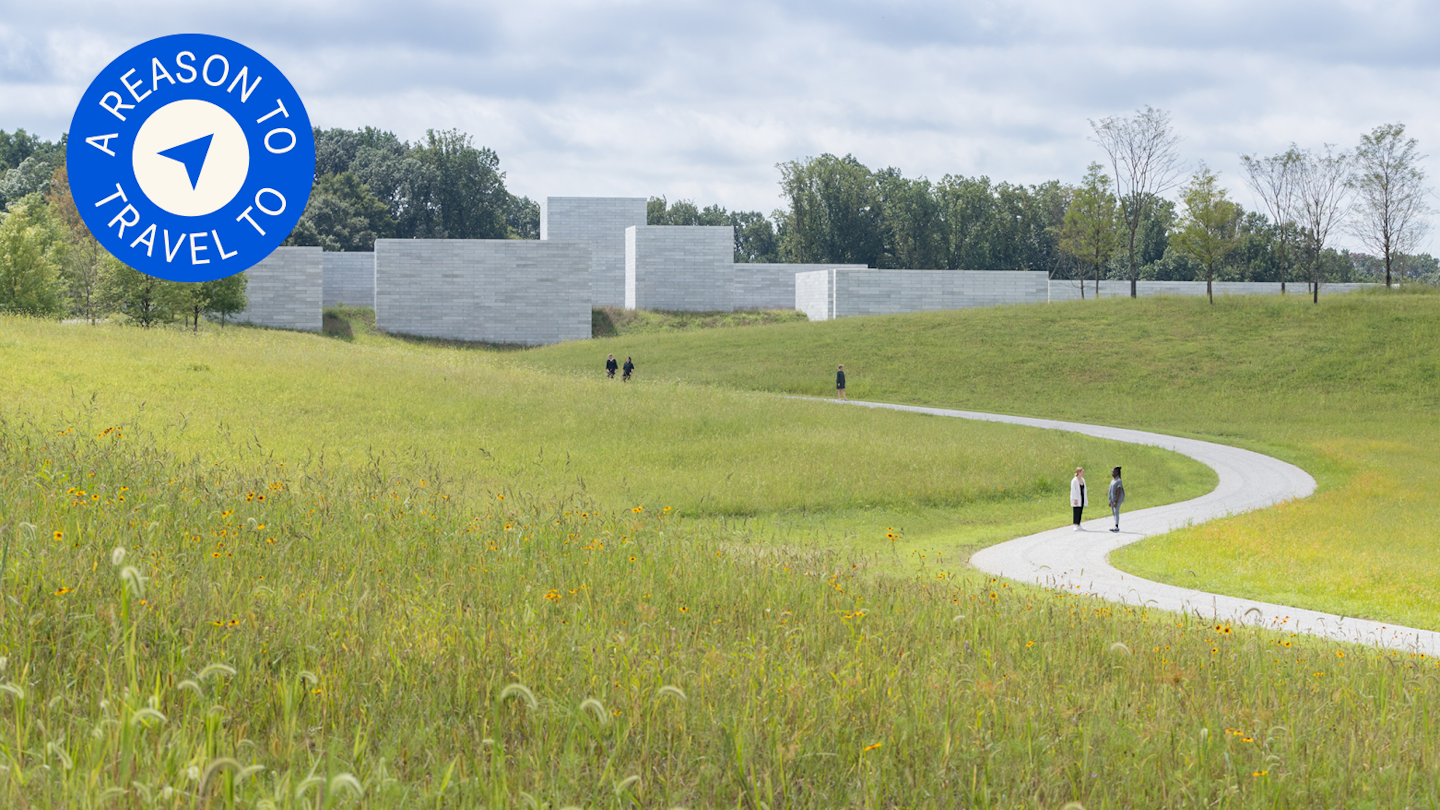Looking for a reason to start planning your next adventure? We have a compelling reason for you to travel to Potomac, Maryland this spring.
Glenstone remains one of the Washington, DC area’s greatest secrets. About 30 minutes from downtown DC in Potomac, Maryland, this gorgeous museum showcases groundbreaking post–World War II artworks in a stunning setting where art, architecture, and nature merge. Beginning this May, there’s another reason to visit Glenstone: one of the largest retrospectives ever mounted of the work of beloved American abstractionist Ellsworth Kelly (1923–2015), on the centennial of his birth.
“Ellsworth Kelly is an artist who has been foundational to Glenstone’s collection,” says Daniel Mauro, Glenstone’s curatorial assistant. “While he was still alive, the museum had a close relationship with him, so we have a pretty amazing collection of his work that spans much of his career.”

That career spanned seven decades—over which time, Kelly helped shape American abstraction in the 20th and 21st centuries. Ellsworth Kelly at 100 charts his evolution, beginning as a young artist in Boston and then Paris—where he studied after World War II on the GI Bill. Along the way, he drew inspiration from nature and the world around him, exploring the dynamic relationships between shape, form, line, and color. Kelly is now regarded as a master of monochrome and multi-panel painting.
Seminal works on display include Window (1949), which reflects Kelly’s pioneering take on painting. “Everywhere I looked, everything I saw became something to be made, and it had to be made exactly as it was, with nothing added,” he explained in 1971.
Another masterpiece to seek out is Yellow Curve (1990), the first presentation of this work in the United States. The long, graceful canary-yellow curve inside a diamond-shaped canvas is his first piece in a series of large-scale floor-based paintings, displayed in a custom-designed space.

The exhibition also features early examples of his multi-panel works, including Painting in Panels (1956) and Painting for a White Wall (1952).
While Kelly made his name in painting, he also created sculptures, drawings, prints, and works in other media. Visitors to the Glenstone show will see examples of all of this output—including a selection of rarely exhibited photographs. “While [photography] wasn’t a central part of his artistic objects,” Mauro says, “it really gives insight into his artistic vision and how he saw the world as an artist, and how he translated so much of the world around him and nature into these different forms.”
Mauro offers crucial advice to visitors: take your time. “A lot of Kelly’s work might seem simple at first when you think about how it is based on shapes and broad uses of color, very abstract forms,” he says. “But with his work, the more time you spend and the more time you see the different relationships drawn across the works of his career, it becomes more enlightening.”
He also recommends coming prepared to walk, as the exhibition covers quite a bit of ground.

Featuring nearly 70 works, the Ellsworth Kelly exhibition will take up much of your time at Glenstone. Yet the captivating campus, called “the most exciting new private museum in America” by the Washington Post, offers so much more. Situated on 300 rolling, woodsy acres are a cluster of concrete pavilions, where rotating artworks are displayed in minimalist settings. An absence of explanatory texts leaves interpretation to the viewer; uniformed staff members are available to engage in conversation about each piece.
Where to eat in Potomac
The museum has two good options right on its grounds: the Café, with a locally sourced, seasonal menu; and the indoor-outdoor Patio, serving cappuccinos and light bites (lemon scones!). In Potomac, the Colada Shop offers Cuban fare with modern, artsy flair, while the brasserie-style Duck Duck Goose in nearby Bethesda taps into Kelly’s French connection.
Where to drink in Potomac
A historic restaurant and bar dating to 1860, Old Angler’s Inn in Potomac has a beautiful outdoor beer garden offering live music. Clyde’s Tower Oaks Lodge in Rockville features an ornately decorated restaurant and bar with an extensive drinks menu, including mocktails made with zero-proof spirits.
Where to stay near Potomac
If you don’t want to stay in central Washington, DC, Bethesda, a 20-minute drive from Glenstone, is a great option. Several hotels offer unique touches, including Canopy by Hilton Washington DC Bethesda North in North Bethesda, with its live green wall and art displays. Additionally, the Marriott Bethesda Downtown at Marriott HQ offers a mid-century-esque flair.





